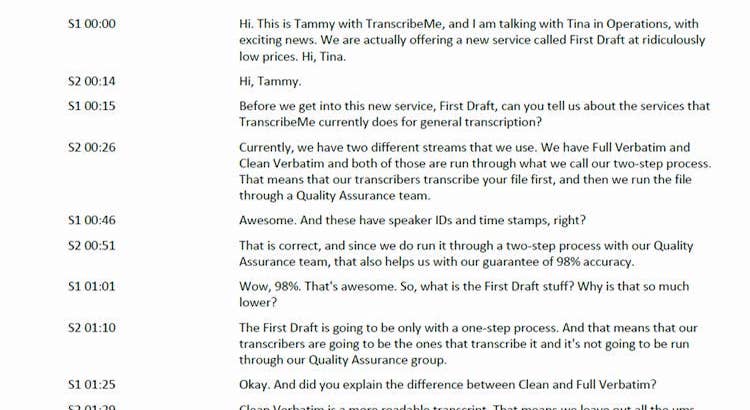What Is Transcription? Everyday Uses Explained
Transcription means turning spoken words from an audio or video file into written text. Many people use transcriptions every day without even realizing it. Examples include quotations in news articles, subtitles in movies, lecture notes, karaoke lyrics, meeting minutes, and dictations. Let's look at how transcription affects your daily routine.
Transcription in Quotations
Quotations are written records of real conversations or interviews, often captured by journalists using transcription services. Media publications rely on accurate transcription for clear and faithful reporting.
- Ensures accuracy: Transcribing speech creates a reliable record and helps prevent misrepresentation of what people say.
- Improves clarity: Readers understand the original message as it was intended.
- Reflects reality: Accurate quotes make articles feel real and engaging.
If you read newspapers or online news, you benefit from automated transcription even if you don't realize it. Allowing for accurate quotations supports honest reporting (learn more about human and automated transcription).
Subtitles and Closed Captions: Text for Visual Media
Subtitles display written dialogue or narration at the bottom of films or TV screens. They might translate foreign languages or simply transcribe speech for better understanding.
Benefits of Subtitles
- Language support: Subtitles make movies and shows accessible to non-native speakers. Research shows subtitles help language learners pick up new vocabulary (2015).
- Improved learning: Watching with subtitles helps viewers automatically learn to read words while understanding their meaning.
- Accessibility: Closed captions are essential for people with hearing impairments. According to the National Institute on Deafness and Other Communication Disorders (2021), about 15% of American adults experience hearing trouble.
Subtitles show that most people interact with transcription daily, from language learning to enjoying international films. To get the best results, it's important to rely on professional subtitling services.
Lecture Notes: Student Transcription in Action
Whenever students attend classes, they act as transcribers. They listen to teachers' words and write them down, either word for word or by summarizing the main ideas. This process transforms spoken language into written content for study.
- Students create personal written records of lectures for review and learning.
- Even if the notes are short summaries, they count as a type of transcription.
Institutions and educators often use professional transcription services for lectures, webinars, and online courses for improved access and comprehension.
Other Everyday Examples of Transcription
- Karaoke lyrics: Singing along to written song lyrics is only possible thanks to transcribed audio.
- Meeting minutes: Companies transcribe meetings for records and to share decisions and action points among staff.
- Dictations: Healthcare professionals and legal workers often dictate notes, which are later transcribed into documents.
- Podcast and video transcripts: Creators provide transcripts to make content searchable and accessible.
Professional Transcription: How It Works
Quality transcription is often handled by experts or advanced software. There are several main types:
- Human transcription: A person listens and types out spoken words. This method is highly accurate and suitable for complex content.
- Automated transcription: AI-based tools quickly turn audio into text. These are great for quick results but sometimes need proofreading.
- Proofreading: You can enhance quality by ordering transcription proofreading services to check for errors and inconsistencies.
Why Accurate Transcription Matters
- Mistakes in transcription can lead to misunderstandings or false information.
- Accurate records help with legal compliance, business efficiency, and educational outcomes.
Transcription and Translation
Transcription also goes hand in hand with translation. After converting speech to text, you may need to translate it into other languages for wider reach.
- Professional text translation services help businesses reach new markets.
- Audio translation services allow you to share your content globally.
How Much Does Transcription Cost?
Transcription costs vary depending on the service, audio quality, and turnaround time. Check current transcription pricing for accurate rates. If you need captions or subtitles, you can also review captioning services pricing.
Getting Started With Transcription Services
Transcription plays a bigger part in daily life than most people think, from reading news quotes to following subtitles or writing lecture notes. If you need reliable, accurate, and fast transcription for any purpose, GoTranscript offers a complete set of solutions.
- Order transcription for meetings, interviews, podcasts, and more.
- Request captioning services or subtitles for your videos.
- Optimize global reach with translation and proofing options.
To boost accuracy, clarity, and accessibility in your work or studies, trust GoTranscript for expert transcription solutions tailored to your needs.



















 Verified Order
Verified Order